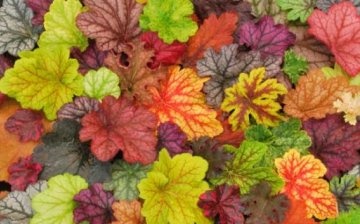Growing Heuchera (Spotted Geranium)
Often, even long before the description of the plant by botanists, ordinary people discovered it, starting to use it in medicine, cooking and other fields. Geykhera is no exception, although the cultivation of geykhera has been known not so long ago.
The American version of the English name of the plant is spotted geranium. This type of geranium has long been used as a medicine. For example, the Indians applied the crushed roots of Heuchera to wounds, ulcers, and treated fever and diarrhea with a decoction.
Until the 20th century, the cultivation of heuchera was not very widespread, although the plant is rather unpretentious. The minimum required conditions are deep drainage, water-absorbing soil, spotted shade, obligatory hilling once a year.
Most Heucher prefer direct sunlight only in the morning.
Heuchera seeds are planted in March-April in a small container; when sowing, they are simply pressed slightly to the surface or sprinkled with a thin layer of vermiculite. The sprouts appear in a couple of weeks.
Seedlings dive after the appearance of 2-3 true leaves. They are planted in the ground in May-June. Young plants begin to bloom in the third year. For the winter, you need to cover with foliage.
The plant is undemanding to the soil, loves light soils cultivated to a depth of 20 cm. When water stagnates or in damp areas, the fleshy rhizomes of heuchera rot, and the plant itself dies.
Since most varieties of Heuchera live in the mountains, they prefer good drainage in gardens. To ensure the water and air permeability of the soil, it is recommended to add fine gravel or coarse river sand to the soil mixture, especially around the rosette of leaves. In addition, it is advisable to add crushed bark or coarse-structured compost to the soil.



